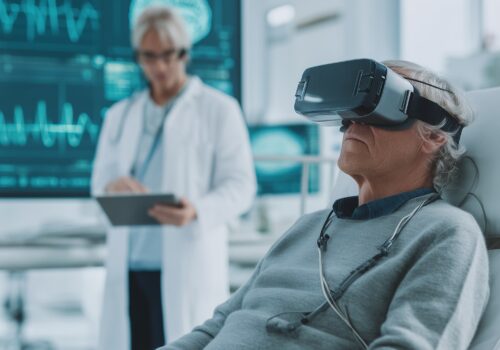Devices for the Blind and Visually Impaired
People who have lost all or part of their sight are significantly limited in their lives, unable to perform the simplest of tasks, unable to see their companion or having difficulty navigating and reading. But today they are offered opportunities that are not limited to a white cane or a seeing-eye dog.
In particular, a “smart cane” for the blind called WeWALK has recently been developed that has the potential to completely change the way visually impaired people navigate their world. WeWALK is a touchpad attachment that can be attached to any cane, turning it into a “smart” cane. The device uses ultrasonic sensors to alert the user to approaching obstacles by vibrating the handle. These sensors detect not only interference at ground level, but also objects hanging overhead or at chest level.
“The Smart Cane can be paired via Bluetooth with most Android and iOS smartphones, which means it can integrate with apps like Google Maps for personalized turn-by-turn directions. In this way, the smart cane can help people with visual impairments get around more easily, especially in big cities.
In addition, the WeWALK smart cane has a built-in speaker and microphone that works perfectly with Amazon’s Alexa voice system.
Today there are not only cell phones with Braille keys, which blind people have been using for some time, but also touchscreen smartphones for the blind. In the U.S., a phone with a screen consisting of a grid of contacts is now being developed. When the user receives a message, the protruding pins form shapes and symbols using “Shape Memory Alloy” technology.
IrisVision has developed a relatively inexpensive visual aid system for visually impaired people. The system uses the power of a Samsung Galaxy smartphone installed in a Samsung Gear VR virtual reality headset. The phone captures the user’s surroundings with the smartphone’s camera and then redirects the image to the eyes to enhance its visibility for the visually impaired. The image enhancement is done using several algorithms designed for different eye conditions.
IrisVision provides a wide viewing angle, and users can vary the color contrast and brightness of the image. Users can also dynamically adjust the zoom area and magnification. The system includes different reading modes, both high-contrast black letters on white and vice versa, making text more readable.
And the device has versions for people with different visual impairments. One set of functions allows partial compensation for macular degeneration, which impairs central vision. Another set of algorithms allows people with impaired peripheral and night vision to use IrisVision.



